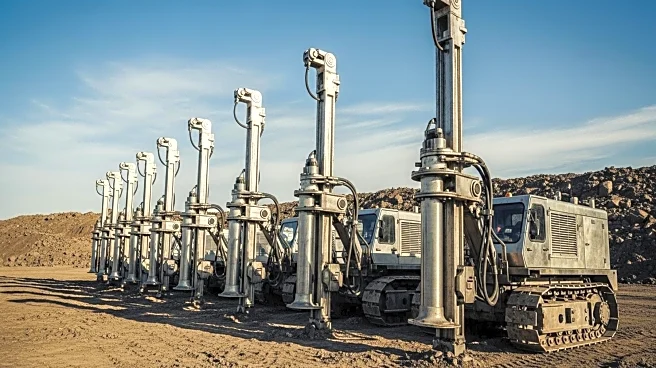What's Happening?
The Association of Mining and Exploration Companies (AMEC) has released a report addressing the complexities of land use in Australia, particularly concerning mining, agriculture, and renewable energy sectors. The report highlights the congestion in project development due to overlapping claims and activities, despite Australia's vast land mass. AMEC emphasizes the importance of coexistence among these sectors, suggesting that land use activities can occur simultaneously without being mutually exclusive. CEO Warren Pearce notes that productivity is being hindered by competing demands, and achieving significant reductions in emissions is impossible without the mining industry. The report also outlines the need for a clear pathway to investment decisions, projecting the expansion of renewables with 10,000km of upgraded transmission lines by 2050 to connect energy hubs to the grid.
Why It's Important?
The report underscores the critical role of the mining sector in supporting the global clean energy transition, highlighting the need for critical minerals like copper and lithium. These resources are essential for renewable technologies, which are expected to increase demand by 350% by 2040. The congestion in land use planning poses a risk to achieving national and sector-based objectives, potentially hampering the transition to renewable energy. The report calls for addressing land access and environmental approval issues to unlock billions in new projects and jobs. This is crucial for meeting ambitious targets for renewable energy generation and net-zero emissions, which are vital for Australia's economic and environmental future.
What's Next?
AMEC's report suggests that without changes in the approach to coexistence, achieving national and sector-based targets will be at risk. The government needs to address the land access gridlock identified in the report to facilitate the mining of critical minerals necessary for the clean energy transition. The establishment of a more integrated system of land use planning could help resolve these issues, ensuring that the mining sector can continue to support renewable energy expansion. Stakeholders, including government and industry leaders, are expected to engage in discussions to find solutions to these challenges.
Beyond the Headlines
The report highlights the broader implications of land use challenges, including ethical and environmental considerations. The need for coexistence among sectors raises questions about sustainable development and the balance between economic growth and environmental protection. The mining industry's role in the clean energy transition also brings attention to the ethical sourcing of minerals and the impact on local communities. Long-term shifts in land use planning could lead to more sustainable practices and improved collaboration among sectors, benefiting both the economy and the environment.










